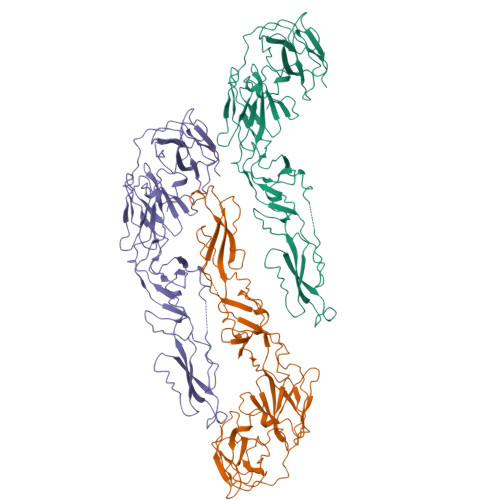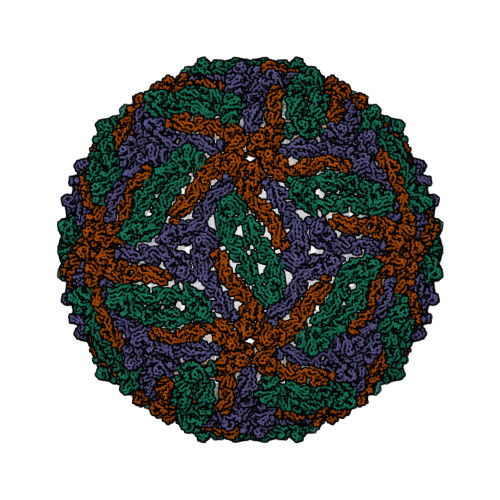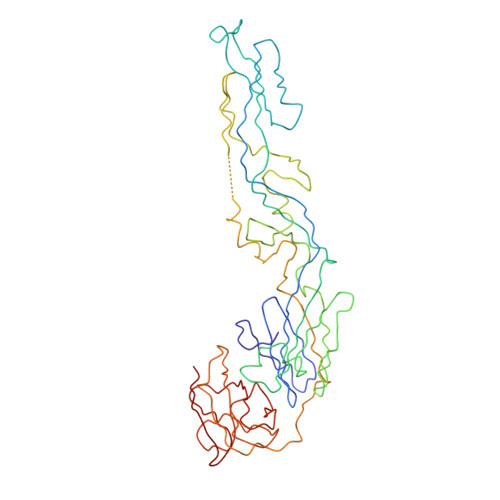Membrane curvature in flaviviruses.
Zhang, W., Kaufmann, B., Chipman, P.R., Kuhn, R.J., Rossmann, M.G.(2013) J Struct Biol 183: 86-94
- PubMed: 23602814
- DOI: https://doi.org/10.1016/j.jsb.2013.04.005
- Primary Citation of Related Structures:
3J0B - PubMed Abstract:
Coordinated interplay between membrane proteins and the lipid bilayer is required for such processes as transporter function and the entrance of enveloped viruses into host cells. In this study, three-dimensional cryo-electron microscopy density maps of mature and immature flaviviruses were analyzed to assess the curvature of the membrane leaflets and its relation to membrane-bound viral glycoproteins. The overall morphology of the viral membrane is determined by the icosahedral scaffold composed of envelope (E) and membrane (M) proteins through interaction of the proteins' stem-anchor regions with the membrane. In localized regions, small membrane areas exhibit convex, concave, flat or saddle-shaped surfaces that are constrained by the specific protein organization within each membrane leaflet. These results suggest that the organization of membrane proteins in small enveloped viruses mediate the formation of membrane curvature.
Organizational Affiliation:
Department of Biological Sciences, Purdue University, West Lafayette, IN 47907, USA. zhangwei@umn.edu
















